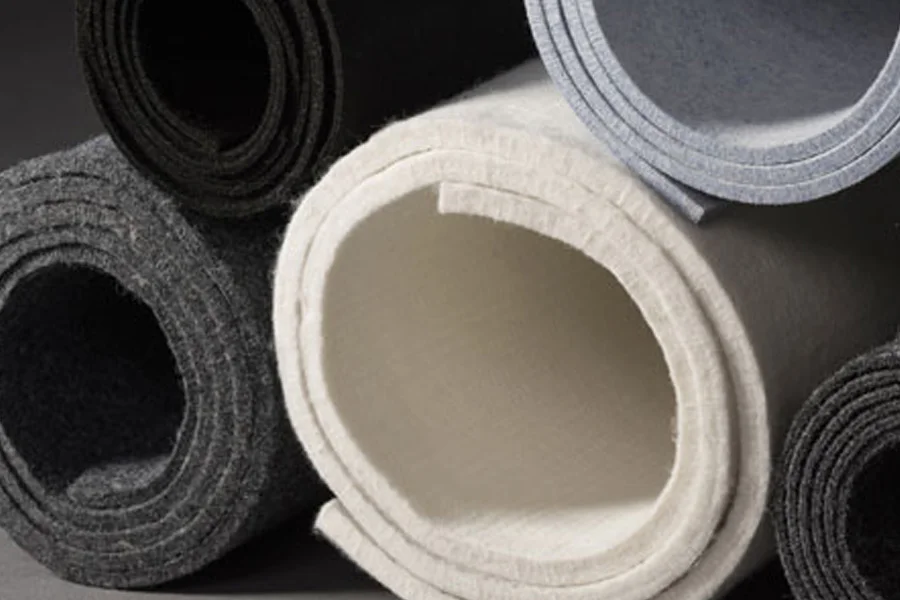Investing in conveyer belts is necessary if you run a food processing unit or pharmaceutical sector. However, learning about the Conveyor Belts types is important. To make an informed purchase, you must first learn about the features before the final investment.
The right belt helps in increasing profit margin and streamlines your assembly line. It can further contribute towards your company’s growth in multiple ways. So, let’s dive more into details.
Conveyor Belts types – what is a conveyor belt?
Generally speaking, the conveyor belt is a looped belt that is driven by and then wrapped around one or more pulleys. An electric motor is used to power the mechanism. The belt is supported using a metal plate bed or rollers on which the belt rests.
- A pulley is used for powering the conveyor belt. It is known as a drive pulley and has an unpowered idler pulley.
- The pulley works at the discharge end of the conveyor belt. Those are called head drives. Another one is called tail drives, located at the end.
- The preferred option is the head drive, situated at the discharge end. It uses the pull force to move the complete belt forward.
Getting on with the types:
Once you are sure of the basic functionalities, it is time to catch up with a reputed Conveyor Belts manufacturer to learn about the types. Some of the noteworthy ones are mentioned below:
- Roller bed: The surface of this belt is made using rollers, which are selected to match production requirements like weight or required speed. The shorter conveyor belts will fall under this category, made using two rollers maximum. But, if the distance between the ends increases, you will need to add more rollers.
The roller bed is perfect for items when loaded onto the belt with gravity. The manual labor here will cause mechanical shock and might damage the rollers. These roller bed belts are used for packing, sorting, inspecting, assembling, and transporting items. - Cleated belt conveyors: These types of conveyors will have vertical cleats in their designs. Such cleats will secure the loose materials during declines and inclines. You can address consistent spacing between the items. Reputed manufacturers are now providing cleats in different shapes. Each one comes with its own application.
You have Invested Capital T cleat, which stands perpendicular to the belt surface. It offers support and flexibility to handle electric gadgets. Then you have Forward-leaning Capital L. These cleats have a wide base to make them more resistant to add force.
Some other versions available are Inverted V and Lugs and Pegs. - Flat belt conveyors: Known as one of the most preferred options, a flat belt conveyor belt is used for internal conveyance. It helps to transport items within facilities. This belt uses powered pulleys for moving continuous flat belts. It consists of either synthetic fabric or natural material. Items are placed on top of the conveyor belt and then carried from one end to another.
These belts are made using different materials, making them extremely versatile. Some optional features are nose bars and center drives. - Curved belt conveyors: As understood from the name, these belt conveyors will use a curved frame to carry items around the corners. They will make tight transfers or can maximize available floor spaces.
These curves can easily go as high as 180 degrees. The truly curved conveyors, which fail to have any straight runs, will only use flat belts. For example, you have modular plastic belts, which are in need of straight runs before and after the curves. - Modular conveyors: A modular conveyor belt uses a single loop made using countless interlocked pieces. These are made using hard plastic. You can remove the segments if needed and replace them individually rather than discarding the entire belt.
These belts are easy to wash and highly resistant to abrasive and sharp materials. You don’t have to work hard to maintain these flat belt conveyors. Such conveyors are suitable for traveling around corners. They can travel straight and around the corner using a single belt and the same motor. - Wash-down and sanitary conveyors: These types of conveyors are mostly seen in bakeries, where donuts are made. The food and pharmaceutical industries need harsh washing and sterilization because they are dealing with food items and must match the safety guidelines.
Well, wash-down conveyors, also known as sanitary conveyors, are designed to withstand the sanitary process for such applications. These conveyors are mostly fitted with flat wire belts. These belts are rugged and quite easy to clean up. - Decline or incline belt conveyors: These incline belt conveyors are known for their center drive and picture-perfect gear motors. They come with a take-up with single or double nose. In place of using the smooth-surfaced belt, this conveyor will have a rough surface on the belt. That makes them perfect for carrying products up and down.
Such systems will cross over with the cleated belt conveyors to help transport items to various elevated points. The products won’t fall off the line! Apart from transferring objects between floors, these belts are highly suitable for boosting gravity flow systems.
Get quality ones from Balaji International:
The next time you are looking for the best Conveyor Belts supplier, Balaji International is the first and last name that should come to your mind. Three different types are available – cotton conveyor belt, hair transmission belt, and rubber conveyor belt. Depending on your uses and the industry you belong to, you can easily pick up your favourite option. And the best part is that you don’t have to invest quite a huge sum of money in their products. Depending on your growing requirements, you can opt for bulk orders too.
For some more details, contact the team at balajiintl@live.in or +913340681087.


